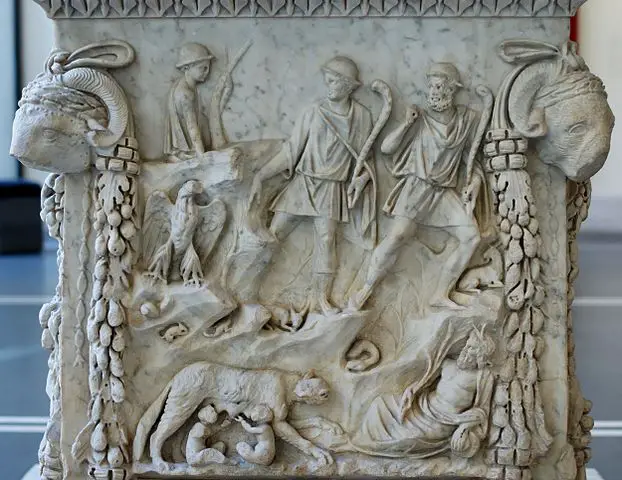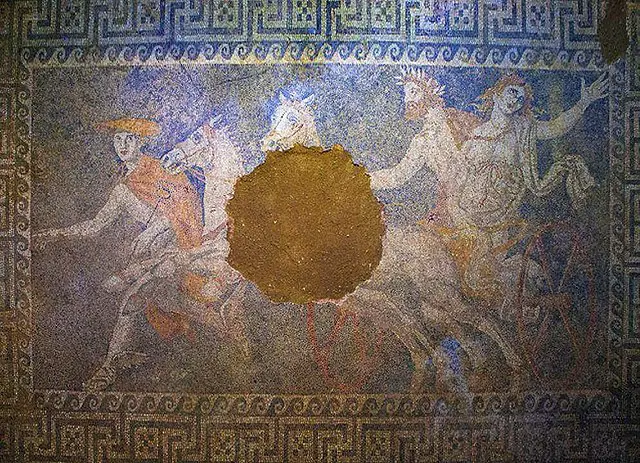
If you walked the streets of ancient Rome just how safe were you? Were these streets filled with crime or were the people afraid to step out of line? The answer might surprise you to know that if you were accustomed to the Roman way of life then you would feel at home in the streets at night.
The crime rate in Rome was high when compared to modern cities. However, this crime was generally targeted against outsiders or political allies. For average Romans who lived within the city, there was a very low crime rate due to the Mos Maiorum or social norm that worked to protect the people of Rome.
Generally speaking, the city of Rome did not suffer from the extremely high crime rate that most people think plagued the city. While the crime rate was higher than in the countryside most crime was directed towards those who had money, thus excluding a majority of Romans who relied upon grain handouts.
Here at The History Ace, I strive to publish the best history articles on the internet. If in the end, you enjoyed this article then share it around the internet. Every share helps me help other people get into or fall in love with history again.
Without further ado, here is everything we as historians know about the crime rate of the city of Rome during antiquity.
Crime in the City of Rome Was Targeted Towards Outsiders and Politicians

One of the most important things to understand about the crime rate in ancient Rome was that for the most part crime was targeted toward either outsiders or politicians.
The reason why only politicians or outsiders were targeted as victims of ancient crime was that they actually had something of value to steal. It is important to remember that outside of daily grain rations and perhaps some household goods the average Roman did not have much.
Essentially the entirety of the population of Rome could be put into two categories; The Patricians and the Plebians. These two groups of people dictated the entire life and social status of their members.
If you belonged to the patrician class of Romans then you held wealth and more importantly the capacity to generate more. This ability to generate wealth indicated that you had enough private land to build a small business and obtain laborers to work it for you. Further, with your wealth, you could hire enough bodyguards to ‘persuade’ people to not commit any crimes against you. At its peak the patrician class of Romans constituted less than 1% of the total population of Rome.
The other 99% of Romans belonged to the plebian class. Here was the common Roman who held virtually no wealth or the capacity to generate their own. A standard plebian would have to work to survive and obtain free food from the generosity of either the Roman state or patrician families.
Because of this if you lived in ancient Rome you would see essentially poor and destitute people fighting over scraps of bread in the market while patricians walked around with their bodyguards. The ‘police’ force of ancient Rome was the bodyguards of these patricians and they often just turned a blind eye towards any ‘crime’ that did not impact the patrician.
Because of this, the plebian people would only attempt to steal and commit crimes against those who had something of value and where they could get away with it. This was either a merchant outsider coming into town to sell their goods or a politician who upset a large enough crowd of plebians.
There Was No Written Law But Instead A Unspoken Roman Constitution

There was no written law in ancient Rome. This is hard for many people to wrap their heads around. How did a city of millions of people function without a central law to guide them?
Well, the answer is that Roman people followed a traditional code of laws called the mos maiorum. This set of laws was based on several traditional values that were taught to Roman children by their parents.
Of these values were fides, religio, disciplina, pietas, gravitas, virtus, and auctoritas. These roman virtues were the backbone of Roman society and all Roman’s would follow them or risk ‘breaking the law.’
This means that if you were walking around the city of Rome the law was based on these virtues. If you acted as a strong independent Roman that respected the Roman virtues then you were not breaking the law.
This was why Roman lawers such as Cicero were so powerful. Since there was no written law they were capable of standing before a crowd an invoking the Roman virtues one by one until they ‘proved’ that their client did nothing wrong.
Because of this, the concept of a crime rate in the city of Rome is hard to talk about. It would be possible to steal bread or someone’s valuables so long as you could defend yourself as acting according to Roman virtue.
Further, somebody could accuse you of breaking the Roman virtues and have you sentenced as a criminal. As you might imagine this would cause quite a problem for anybody who stepped out of line and stole from another person.
Because of this, it is hard to say that somebody was breaking a law in ancient Rome. It would be possible for you to do just about anything and then defend it as the ‘Roman’ thing to do.
So Did Rome Have A High Crime Rate?

So we have established a couple of things; first that ‘crime’ in the city of Rome was generally targeted towards targets where the average plebian could get away with and justify the crime. Second, since there was no written down law a Roman could justify just about any crime so long as they acted according to Roman virtues.
Simply put, yes Rome did have a high crime rate but if you were a Roman local then you would hardly notice any crime at all. Romans were simply trying to survive and most people had hardly anything to take or steal. The wealthy Romans had bodyguards and the poor ones had nothing. The only people who were a target for crime were the merchants, politicians, and outsiders who attempted to do business in Rome.
Simply put, if you lived in the city of Rome during the late Roman Republic and Roman Empire then chances are the city would have been fairly safe for you. The real threat to public safety was either a crazed Roman emperor, invading army, disease from less-than-ideal infrastructure, or starvation.
Conclusion
There you have it; everything you would ever want to know about the crime rate in ancient Rome.
Most people assume that Rome during the late Republic and Empire was a crime-ridden area. While crime no doubt did occur it was generally against those who had something worth taking. Further, if a Roman committed a crime then their neighbors would often seek vengeance for breaking the traditional Roman law.
I hope you enjoyed this article. Here at The History Ace, I strive to publish the best history articles on the internet. Feel free to sign up for the free newsletter and share it around the internet.
Further, you can check out some of the other articles below.
-
The Crime Rate of Ancient Rome: Was it High or Low?

How high was the crime rate of ancient Rome? Was it a violent city or was it just normal? Well here is everything to answer that.


